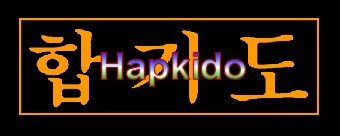|
|||
|
| -Countries |
| -Dictionary |
| -Federations |
| -M.A. Timeline |
| -Number System |
| -Styles |
| -Weapons |
| -Who's Who |
| -Updates |
| -Credits |
| -Stats |
| -Webmaster |
|
Hapkido is a powerful and innovative Korean martial art. Literally translated, the word Hap means coordination of harmony, Ki denotes the essence of power, and Do means the art or the way. Hapkido incorporates powerful and fluid kicking techniques; highly effective and flowing throwing techniques; and precise and sharp hand techniques. This concise and practical martial art is the result of a 1300 year pursuit of the Way. Hapkido began in Korea through Buddhism. The techniques were initially handed down through the hierarchy of monks to ruling families and other royal officials as a means of self-protection and personal safety. Unlike many other martial arts styles, Hapkido was not generally known, or practiced. The recorded history of Hapkido dates back to Sam Kuk Sidae (The Era of Three Kingdoms, c. 3) Buddhism arrived in China from India circa 67 BC and was introduced into Korea in 372. The evidence of Buddhism and Hapkido passing through the Korean court can be found in various wall paintings depicting Hapkidoists during Kokuryo. One of the three kingdoms, Sel La, formed a special youth group called Hwa Rang Do. The purpose of this organization was to train future national leaders through stringent training, combining mental discipline, martial art, and more traditional scholarship. Hapkido techniques were taught for physical fitness and mental discipline. Backje, the last of the three kingdoms, trained all of its people with Hapkido. The three kingdoms united to form the Koryo dynasty. During this dynasty, many Hapkido experts were brought to the palace to perform demonstrations of the martial arts for the ruling king and his court. A monk grandmaster named Su-san, taught Hapkido to Korean monks. These techniques were used in the Im Jin Wae Ran invasion. This early predecessor to Hapkido flourished through many dynasties but eventually lost its popularity when Buddhism was replaced by Confucianism in Korea. Because Confucianism respects scholarly discipline over physical force, Hapkido disappeared almost entirely, passed down only through individual masters, monks, and, occasionally, royal families as a secret self-defense. More recently, Hapkido was reintroduced by the father of Hapkido, Yong Sool Choi (1904-1986). The Japanese Army invaded and ruled Korea from 1910 through the end of World War II. During that period it was not uncommon for Korean families and treasures to be relocated to Japan. Young Sool Choi began his studies at the age of nine. At this time many great warriors, in accordance with ancient traditions, undertook annual pilgrimages throughout Japan to improve their martial arts skills. During their travels they visited local temples to offer prayers and donations. One such warrior, Master Shokaku Takeda, paid regular visits to the monastery where Yong Sul Choi resided. During one of Master Takeda's visits, the resident Monks, seeing an opportunity, beseeched Master Takeda to take the young Choi as a disciple. Master Takeda was taught the art of swordsmanship by his Father and Grandfather. Master Takeda taught a weaponless martial art known as Daito-Ryu Aiki Jujitsu. This art emphasized the use of joint locks, strikes and nerve attacks to neutralize an opponent. By the time Choi returned to the mainstream world, 35 years later, Korea had already been liberated from colonial Japanese rule. Choi proceeded to impart the techniques he had learned to a select group of disciples. These disciples began to spread and popularize Hapkido during the Korean conflict in the 1950s. Today, one would be hard pressed to find a Korean city without Hapkido schools. Government organizations, military academies, and special military units all contain Hapkido practitioners, totaling over one million in Korea alone. In the United States of America, Germany, Canada, Spain, Argentina, Mexico, Brazil, China, and France, there exists a solid foundation of Hapkido schools. This rapid spread and popularization has been attributed to the efforts of master instructors and the unique nature of Hapkido itself.
|

